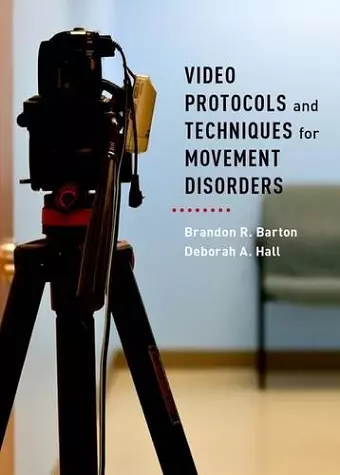Video Protocols and Techniques for Movement Disorders
Deborah A Hall author Brandon R Barton author
Format:Digital product license key
Publisher:Oxford University Press Inc
Published:14th Jan '16
Should be back in stock very soon

Video Protocols and Techniques for Movement Disorders presents this visually-based subspecialty through a truly unique product, illustrating how to establish a start-of-the-art videotaping workspace as well as how to instruct patients on how to participate in videotaped examination. The authors cover various technical issues-space, lighting, equipment-as well as medical protocols related to filming movement disorders, accounting for patient variability and abilities. This essential guide teaches the reader how to capture the key features of a given patient's disorder, detailing the ideal interactions between the videographer and patient. Issues of video storage and editing are addressed in practical terms. Your purchase of Video Protocols and Techniques for Movement Disorders provides you personal access to this online-only product as part of Oxford Medicine Online (www.oxfordmedicine.com http://www.oxfordmedicine.com). At the time of this printing, Oxford Medicine Online allows you to print, save, cite, email, and share content; download high-resolution figures as PowerPoint® slides; save often-used books, chapters, or searches; annotate; and quickly jump to other chapters or related material on a mobile-optimized platform. Oxford Medicine Online's applicable Privacy Policy and Legal Notice (available at www.oxfordmedicine.com) shall govern your use of the site. Technical Requirements In order to access Video Protocols and Techniques for Movement Disorders as part of the Oxford Medicine Online website, you need a standard web browser such as: Internet Explorer 9; Mozilla Firefox 9; Safari 5; Google Chrome 17 or 18. You will also need an internet connection, HTML and JavaScript support. Your operating system should be one of the following: Windows XP; Windows Vista; Windows 7; MAC OSX+. You will also need MS Office installed on your computer to be able to open images in PowerPoint files. The Oxford Medicine Online products are best viewed with a screen resolution of 1024x768, although they will also work at higher and lower resolutions. Please note that some tables are wide and so require 1024x768 screen resolution.
ISBN: 9780199948512
Dimensions: 140mm x 191mm x 18mm
Weight: 116g
32 pages